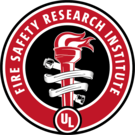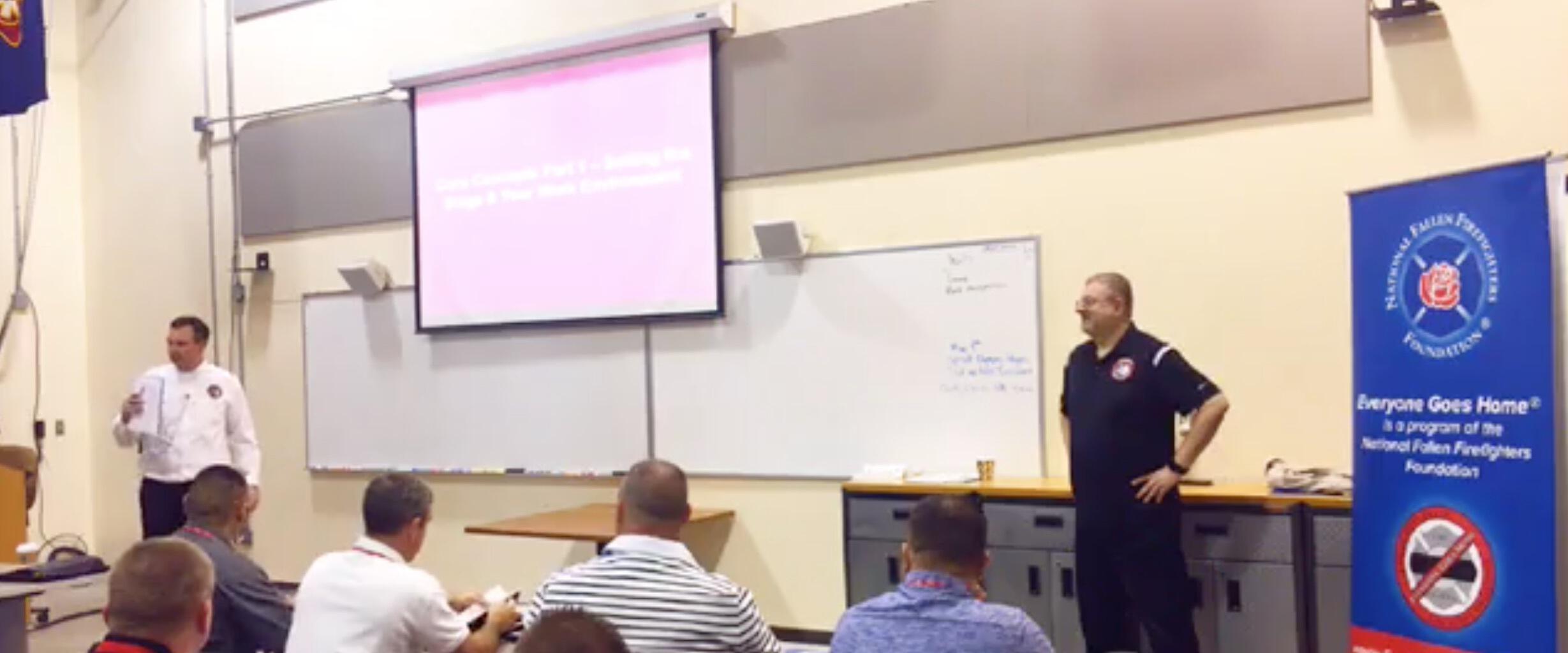Howard County, MD, Department of Fire and Rescue Services hosted the NFFF (National Fallen Fire Fighters) and Underwriters Laboratories (UL) Firefighter Safety Research Institute’s pilot course of Fire Dynamics Boot Camp. The course was designed to illustrate how fire service leaders and instructors can incorporate current research findings about fire behavior and fire fighting tactics into their training programs with the ultimate goal of improving safety on the fire ground. Videos from the Fire Dynamics Boot Camp are on NFFF’s YouTube Channel.
The research findings presented at the Fire Dynamics Boot Camp were not intended as mandates for change. Instead, they were presented in a manner for leaders and instructors to consider as validated findings on fire dynamics to improve fire fighter performance on the fire ground. The goal is for fire fighters to apply fire dynamics concepts with what they see, their resources, their staffing and their equipment so they can get the best outcome possible.
The pilot class divided the last decade of fire dynamics research into five sets of core concepts for the Boot Camp. Each of these core concepts was supported by research results, video and/or hands-on demonstrations. The core concepts are listed below. More information on these concepts and other supporting material is available at ulfirefightersafety.org.
5 Core Concepts of Modern Fire Dynamics
- SETTING THE STAGE AND YOUR WORK ENVIRONMENT
- No amount of technology is going to replace the need for you to know your profession.
- Your workplace has changed; you need to evolve. For example, lightweight construction fails rapidly when exposed to heat. Synthetic fuel loads found in homes today produce much more energy when burning than the natural fuel loads that were found in homes of previous generations.
- Fire dynamics-based tactics should align with the available resources (staffing, timing water, etc.).
- Don’t let training props set us up for failure.
- Know how your turnout gear functions. Energy flows from high to low so energy release can easily exceed the capabilities of fire fighter protective gear and safety equipment.
- Know how your equipment works and the limitations of the equipment.
- FIRE DYNAMICS
- Fire development changes when a fire becomes ventilation-limited.
- Fire flows from high pressure to low pressure.
- No smoke showing means nothing. Once an opening is made, read the air flow, look for signs of smoke or flames deep in the building and anticipate the presentation of smoke.
- Keep the wind at your back and be mindful of unplanned window failure.
- Flow path and suppression must be considered together.
- Water does not push fire. Consider reducing the energy release and heat production with an offensive transitional attack (i.e., quick exterior knockdown). Remember that nozzle movement matters (steep and straight).
- INITIAL FIRE ATTACK
- Ensure there is a completed size-up of the building geometry, fire location, fire stage and flow path(s) before starting an interior attack.
- Thermal imagers provide additional critical information about the heat source. Use one on every fire.
- Assume all structure fires are ventilation limited until proven otherwise.
- Put water on the fire quickly from the position of the best advantage.
- Smoke is unburned fuel. Flow water on hot fuel. Don’t wait for visible flames.
- Initiate your fire fight on the level the fire is on.
- Water in the eaves can get the water where it needs to go for attic fires.
- The door closest to the fire truck should not dictate line/stream placement. Train on the options and develop expectations. The 360 will tell you where best to start the attack.
- Use the reach of your stream to maximize your attack push (interior vs. exterior; small opening vs. large opening).
- Consider owing up instead of down with a master stream.
- Use a broken stream to flow water on solar panel systems.
- COORDINATED VENTILATION
- Forcing the front door (or any door) must be thought of as ventilation.
- Controlling the door limits the air and size of the fire. Consider door control prior to entry, after entry and for isolation.
- Know you are at increased risk when you are between where the fire is, where the fire wants to go, and you are without water or a door to close.
- Venting does not always lead to cooling. Well-timed and coordinated ventilation leads to improved conditions.
- Coordinating vertical ventilation with fire attack must occur just like coordinating horizontal ventilation with fire attack.
- Understand knee-wall fire dynamics. There may be a delay in fire growth.
- Positive pressure attack is exhaust dependent and so is extension into voids.
- THERMAL IMAGERS AND BASEMENT FIRES
- Thermal imagers provide additional critical information regarding the source of heat.
- Thermal imagers may help indicate there is a basement fire but can’t be used to assess structural integrity from above.
- When encountering a basement fire, don’t fall through or get caught in the ow path.
In the Press
Training program in Howard County shares updated fire-fighting techniques

